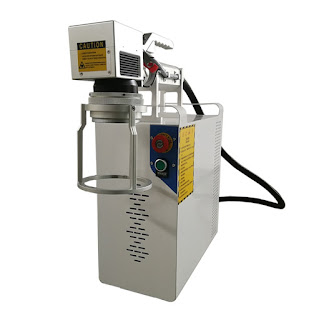A Quick Guide to Laser Engraving
How does laser engraving work?
Laser etching, laser marking, and laser engraving are all applications that can be met by industrial laser cutting machines. The capabilities and features of laser machines vary widely: there are CO 2 laser engravers that primarily emit low-power laser beams that fit comfortably on your desk, and high-powered fiber lasers designed specifically to facilitate high- - volume laser marking and engraving applications in industrial environments. Different lasers vary depending on the specific chemical they are used to produce the laser beam. In general, all laser cutting machines have three common components: the laser itself, the laser's control system, and the marking surface. The machine operator uses a software program to modify the settings of the laser cutting machine, including the power output of the laser and the speed of the controller that guides the laser across the surface of the material. These settings can be used to change the laser cutter application from laser engraving to laser etching or marking.
What is laser engraving?
Laser engraving is a special type of laser marking that produces similar results compared to traditional engraving methods, but without the use of ink or tool bits that contact the surface material. Compared to its sister technologies - laser etching and laser marking - laser engraving is the most easily understood. In laser marking, a low-power laser beam moves slowly across the target material. The beam discolors the material slightly, producing a high-contrast permanent mark without damaging or compromising the structural integrity of the material. Laser marking is often referred to as laser coloring or laser dark marking, a nomenclature that emphasizes that the material is unaffected by the marking application.
A third application is laser etching, which occurs when a high power laser beam is used to melt the surface of a target material, causing it to expand and leave a visible raised mark on the surface of the material. Laser etching can be applied to a variety of surfaces and materials, typically removing less than a thousandth of an inch of material surface.
For aerospace components, manufacturers who choose laser engraving over alternative marking methods have significant advantages: Low variable costs, chemical etching is a common alternative to laser engraving and requires the use of strong acids to mark the material. Companies using this method require adequate wastewater treatment or a properly certified third-party company to responsibly dispose of the chemical waste, and a completely new stencil needs to be made for each new image. In contrast, laser engravers have zero input in addition to the power required to run them. This translates into low and predictable costs for manufacturers. Versatility, from thousands of feet of wiring running the entire length of a Boeing 747 to backlit panels in aircraft cabins, laser marking can be applied to every component and part in the global aerospace supply chain.
Permanently marked, contractors who manufacture parts for the aerospace and defense sectors often seek certification to the SAE AS9100D-2106 quality standard to demonstrate their commitment to manufacturing quality. The standard combines the general direction of ISO 9001 quality management systems with specific guidelines for the aerospace and defense industries.


评论
发表评论